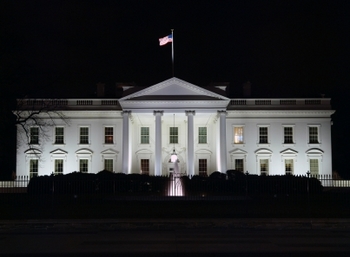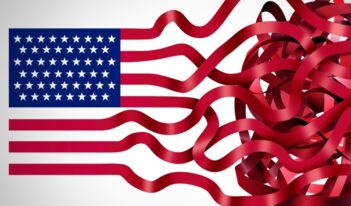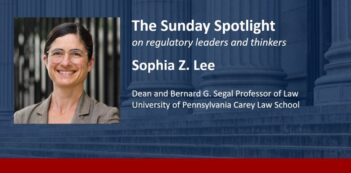
Different agency design choices result in a continuum of independence.
When Congress creates an agency, it is clear that legislative design choices will affect the ability of Congress, the president, and interest groups to influence that agency. In debating the wisdom of omitting a bipartisanship requirement, for example, someone might point out that a president can more easily influence a multi-member agency when he can appoint members from any party (that is, his party) instead of having to appoint members from both parties. Alternately, opponents of the proposed agency’s mission might criticize the choice to have one person, rather than a group, run the agency because the resulting agency will be more dynamic and unfettered than an agency run by a group that must reach agreement before it can act.
And yet once an agency is up and running, it is typically lumped into one of two categories: executive (subject to presidential control) and independent (not subject to presidential control). The president’s power to remove the agency’s head(s) draws the dividing line between those categories. If the president can remove the agency’s head for any reason, the agency falls on the executive side of the line. If the president can remove the agency’s head only for cause, then the agency falls on the independent side of the line.
But of course, what is true at an agency’s start remains true until the agency’s end: different design choices result in different agencies. Those design differences, along with practical distinctions, place agencies not into two categories, but instead on a spectrum from more independent to less independent.
Structural differences between agencies result in different levels of independence. Seven structural features are traditionally associated with agency independence: removal protection, specified tenure, multimember structure, partisan balance requirements, litigation authority, budget and congressional communication authority, and adjudication authority. Some of these features contribute more to independence than others. For example, agencies headed by a group generally have greater independence from the president than agencies headed by a single person, in part because it may take a long time for the president to appoint a majority of a group.
Even within a single factor, variations can lead to greater or lesser independence. Take bypass authority—the ability to communicate directly with Congress without going through the president. Some agencies, like the Consumer Financial Protection Bureau (CFPB), can send proposals or comments on legislation directly to Congress. Others, like the Federal Energy Regulatory Commission (FERC), must submit those materials to the president when they send them to Congress, giving the president a chance to lobby the agency to change its mind or to lobby Congress to ignore the agency. Even this discussion oversimplifies the picture. Many other structural features, such as qualification requirements for agency heads and funding streams, affect independence, too.
Functional differences between agencies also result in different levels of independence. No president fully controls the government he is tasked with running. The bureaucracy is simply too big. So the president focuses his attention on some agencies, leaving others relatively free to do as they please.
In addition, control comes with political costs, whether that control takes the form of a simple communication with the agency or the removal of an agency’s leader. Because of those costs, a president will not exercise control over an agency unless the political cost-benefit analysis favors it. On the other side of the coin, no agency wants to be fully walled off from the president. The goals and jurisdiction of even the most structurally independent agencies, such as the Federal Reserve and the CFPB, will overlap with those of traditional executive agencies, such as the U.S. Department of Treasury and the Department of Justice (DOJ). A smooth relationship with the president means a smoother path to progress in shared regulatory space. And all agencies will need the political clout of the president at some point. For example, most agencies have to ask Congress for funding every year. The presidential-congressional dynamic dominates budget talks, so having the backing of the president might quite literally pay off. The president can leverage that clout to exert some measure of control over agencies.
For these reasons, the “independent agency” label does little more than create a false dichotomy. There are not just two types of agencies. Different permutations of design choices result in many different kinds of agencies. And so, in reality, agencies fall along a continuum ranging from most insulated to least insulated from presidential control. An agency’s place along that continuum is based on both structural insulating features as well as functional factors. And that placement need not be static. It can shift depending on statutory amendments or an increased (or decreased) presidential focus on the agency’s mission.
Why does all of this matter? To start, it provides a simple answer to a question many consider complicated—whether the president can take a particular action with respect to an agency. As we see it, in each case the answer lies in straightforward statutory interpretation: a president can take any action toward an agency that is within the scope of his Article II powers unless an agency’s enabling statute prohibits such action. Moreover, our approach undermines enduring dicta in Humphrey’s Executor v. United States that suggests the president cannot constitutionally control independent agencies because those agencies lie outside the executive branch, and thus outside his reach.
One practical application of this view of agency insulation is the longstanding exemption of certain “independent” agencies from executive orders governing regulatory review. Because Congress has not insulated those agencies from regulatory review by statute, the president can require them to comply with the governing executive orders. The president can, of course, decline to do so if he decides that the political costs of doing so are not worth the benefits. But that is a political, not legal, question.
The administrative state is large and growing larger still. We hope that, as new questions about the permissible scope of presidential control over agencies come up, answers will be informed by a view of agencies falling along a continuum of most to least independent rather than by dividing them into only two rigid categories.
This post draws on the authors’ recent article, published in the Cornell Law Review, Deconstructing Independent Agencies (And Executive Agencies).





